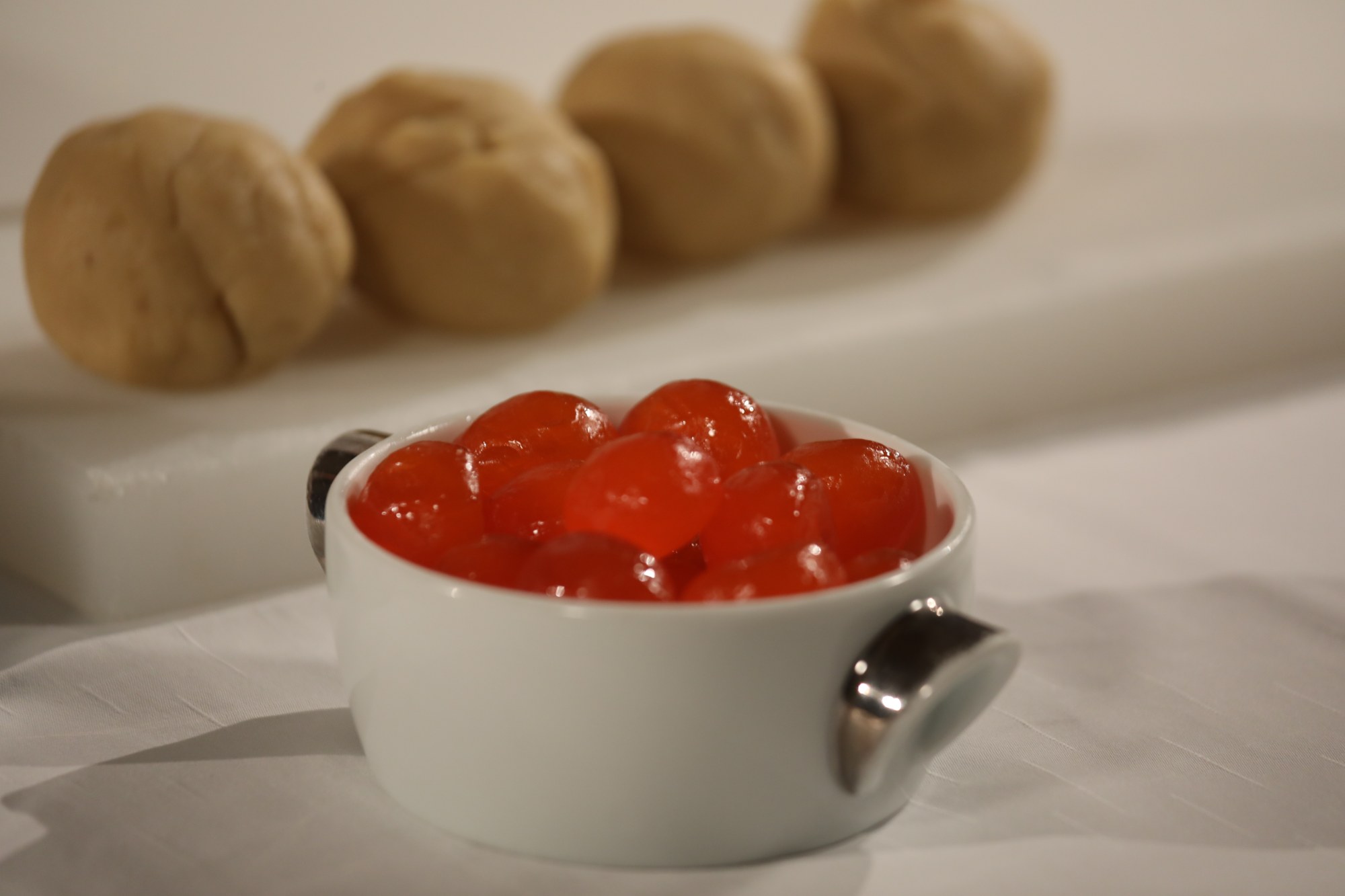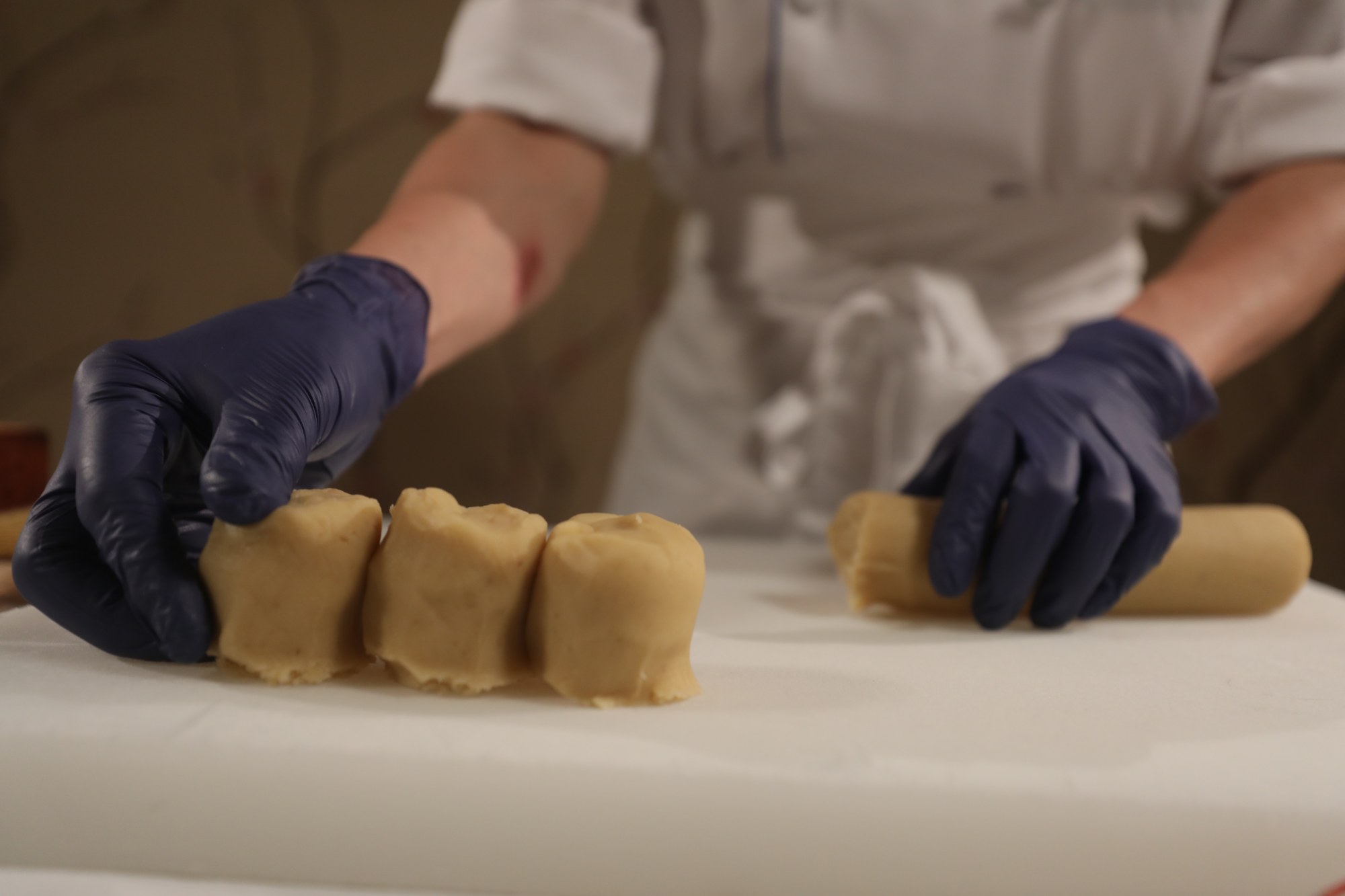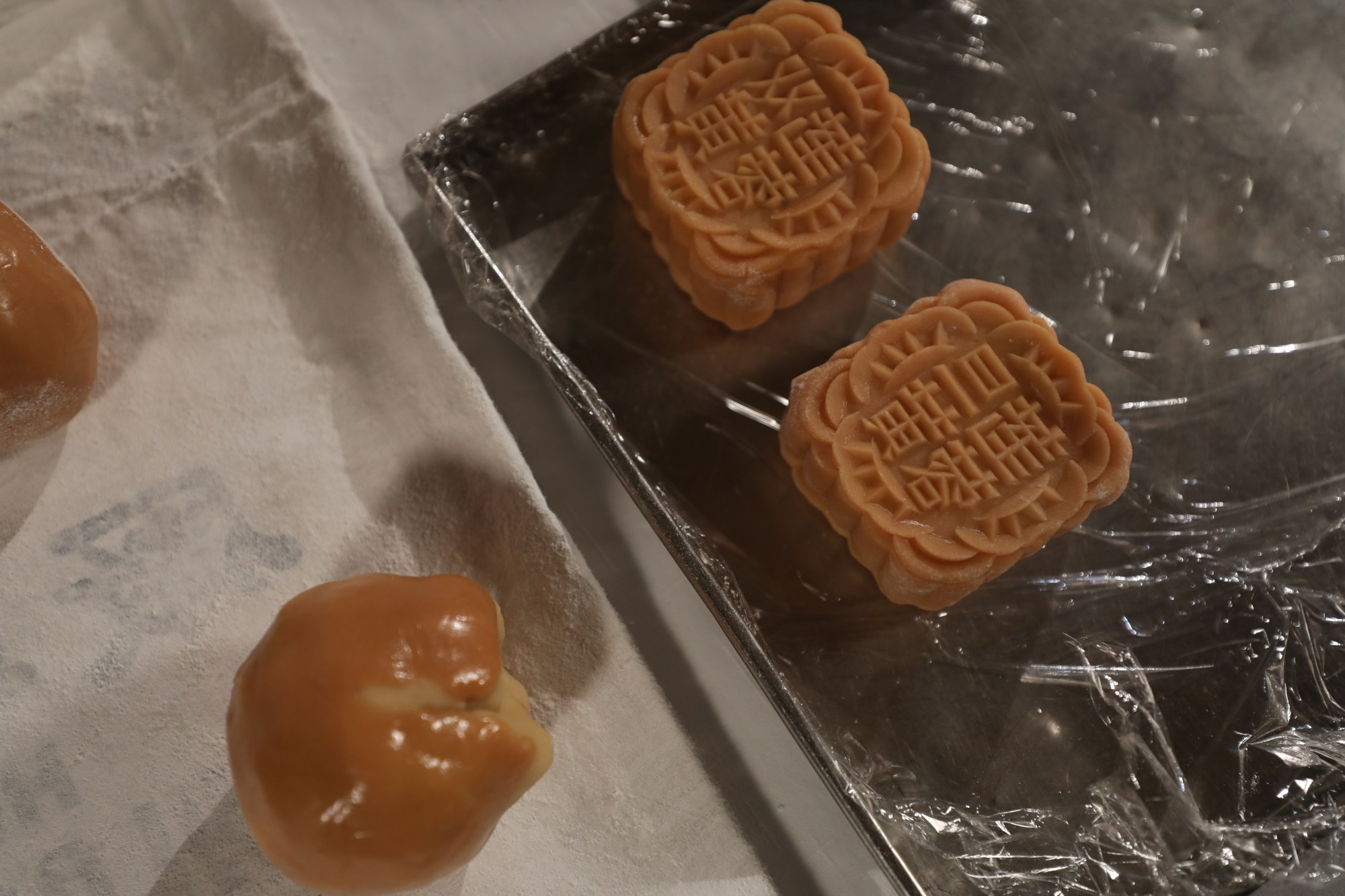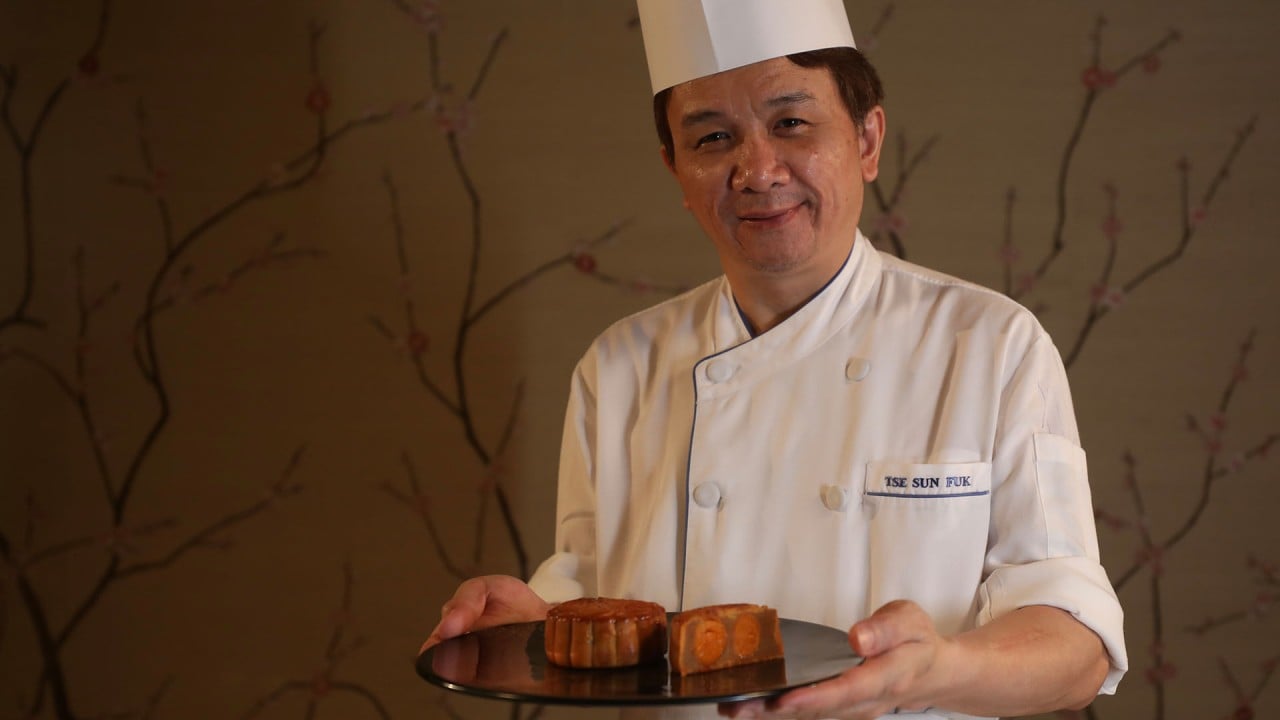
How to make mooncakes – ahead of Mid-Autumn Festival, a lesson from Hong Kong dim sum chef Tse Sun-fuk
- Dim sum chef Tse Sun-fuk at the Cordis Hong Kong hotel gives the Post a lesson in making traditional mooncakes with lotus seed paste and double egg yolk filling
- There’s a knack to adding the two egg yolks to each ball of lotus seed paste; after encasing the balls in pastry, the trickiest bit is moulding them into shape
With the coronavirus pandemic under control in Hong Kong, families will be able to gather and celebrate Mid-Autumn Festival this year – and enjoy eating mooncakes.
Usually square, traditional mooncakes are dense – filled with sweet lotus seed paste and whole salted egg yolks. They are sliced up for sharing while admiring the moon at its fullest on the evening of the Mid-Autumn Festival.
The Post got a lesson in making traditional mooncakes from Tse Sun-fuk, a dim sum chef at the Cordis Hong Kong hotel in Mong Kok who has 30 years’ experience.
Asked if he likes making traditional mooncakes, Tse gives a typically pragmatic Hong Kong answer. “I prefer making egg custard mooncakes because you just need to bake them once and they’re done. With traditional mooncakes you need to bake them twice,” he explains.
Nevertheless he was game to demonstrate how to make the hotel’s signature white lotus paste mooncakes with double salted egg yolks.
Making traditional mooncakes from scratch can be tedious. The lotus seeds need to be soaked overnight, boiled, the skins painstakingly removed and the seeds mashed (thank goodness for blenders), and then mung bean paste, sugar and cornflour added. To save on time and effort, cooks can buy lotus seed paste from shops instead.
Tse had already prepared the ingredients for the mooncake dough, which is made with flour, sugar syrup, lye water (or alkaline water), rapeseed oil, and lard – the latter makes it smell and taste delicious. He says it’s quite hard to knead the dough by hand; he uses an industrial mixer.
The lotus seed paste filling is divided into even portions and rolled into balls. But how to put two firm egg yolks in there? Tse places one of the yolks on one side of the ball and the other directly opposite, then pushes each towards the centre and rolls the combination again into a ball shape.
Once that’s done, it’s time to encase the lotus seed paste and egg yolks in pastry dough. The dough is divided into even portions; each is rolled into a ball, and flattened using the side of a cleaver. I was definitely not adept at this and the dough stubbornly stuck to my cleaver.


The rolled out dough is placed on top of the lotus seed ball, then Tse deftly manipulates the dough downwards while simultaneously pushing the lotus seed ball into the dough so that eventually it is almost completely covered.
This seems a near impossible task at first, but by following Tse’s instructions, I somehow achieve it.
Now comes the fun (and noisy) part. Tse has a wooden paddle with a carved design, and somehow we are going to fit the dough ball into this mould.

“Throw some flour inside the mould first, otherwise it will be difficult to get out without ruining it,” Tse warns. Then we flip the paddle over to shake off the excess flour.
I watch him squeeze the giant ball into the mould, and he warns me to ensure the corners are filled by pressing down on it with my palm.
Then he takes the paddle and knocks it three times against the table – once on the right side, then, after a twist, on the left side, and then face down with his other hand waiting below to catch the mooncake.

Luckily mine felt out with relative ease (and none landed on the floor).
The mooncakes are arranged on a baking tray and baked at 250 degrees Celsius (480 degrees Fahrenheit) for about five minutes. Then they are taken out of the oven and carefully brushed with egg wash before being baked for another 10 minutes at 200 degrees Celsius (390 degrees Fahrenheit) until they’re golden brown.
Tse advises not to eat them right away, but a day or two later to allow the flavours to meld together first.












